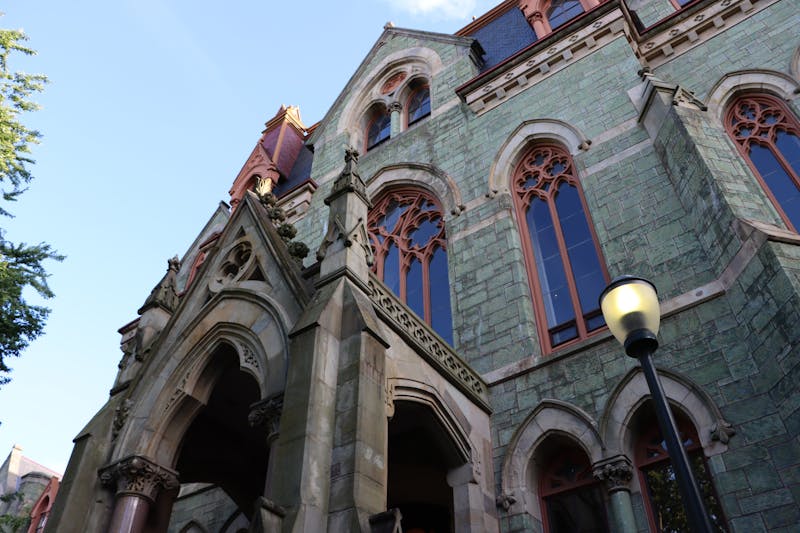
The Wistar Institute may be known for prestigious cancer research and vaccine development, but its latest project has a more visible impact on the campus.
The institute began construction in November of a new pavilion behind its facilities that will give faculty and staff members a patio and cafe. The pavilion is one of a number of new initiatives developed by President Russel Kaufman and the Wistar board of directors.
Wistar has "a very high impact" in the field of cancer research, Kaufman said, but has "aging infrastructure. ... We need to create a modern facility."
Wistar is a non-profit biomedical research facility that is unaffiliated with the University, although many of the institute's faculty members have appointments at Penn. Thirty-five Penn graduate students also conduct research at Wistar.
The project is the first phase of construction for the new Woodland Walk, which will extend from 36th Street to Spruce Street, according to Penn Facilities Managing Director Mark Wilson.
Wilson said the University is currently in the process of designing a plan for the walkway, which will improve the safety and the appearance of the area.
The improvements will include a new lighting system, a new "direct and linear" walkway, a new plaza at the current site of the Steinhardt Garden, increased access for the disabled, and a correction of drainage problems.
Wilson did not comment on when the plans will be finished, or when construction on Woodland Walk will begin.
Wistar spokesman Frank Hoke noted that the institute has worked with the University's facilities office in coordinating the construction plans for the patio and cafe, as well as the office of fraternity and sorority affairs due to Wistar's close proximity to the Psi Upsilon fraternity house.
Hoke added that daily construction on the Wistar site will not begin before 9 a.m. and work will be stopped altogether during reading days and exams, in order to "minimize the impact of our construction on student life," he wrote in an e-mail.
Hoke noted that because Wistar is not affiliated with the University, Penn officials are not directly involved in the pavilion construction plans.
Although Wistar is smaller than many other important academic health centers- -- Penn's School of Medicine has 1,500 faculty members -- the Institute's funding is high, as is the quality of its research, according to Kaufman.
Penn Graduate student Michele Fields, who will be finishing her seventh year of graduate work in April, first came to Wistar in 1998, and said she has enjoyed her immunology research so much that she will spend a few more years at the Institute doing post-doctorate work.
"I don't know if I'll be here long enough to see it happen," Fields said of the new facilities, but added that she knows many people who would take advantage of the new cafe and seating area.
The Institute -- which Fields described as a "close-knit community" -- was founded by Casper Wistar in 1892. Wistar, a Penn anatomy professor, taught his lectures with a personal collection of preserved human specimens.
The collection was eventually housed in Logan Hall as a museum of medical models. After a fire threatened the samples, Penn worked to establish a more permanent home for the museum with the help of Isaac Wistar, who endowed a research building in honor of his great-uncle.
Wistar has since grown into a prominent research center with the development of vaccines against rubella and rabies.
The Daily Pennsylvanian is an independent, student-run newspaper. Please consider making a donation to support the coverage that shapes the University. Your generosity ensures a future of strong journalism at Penn.
DonatePlease note All comments are eligible for publication in The Daily Pennsylvanian.







